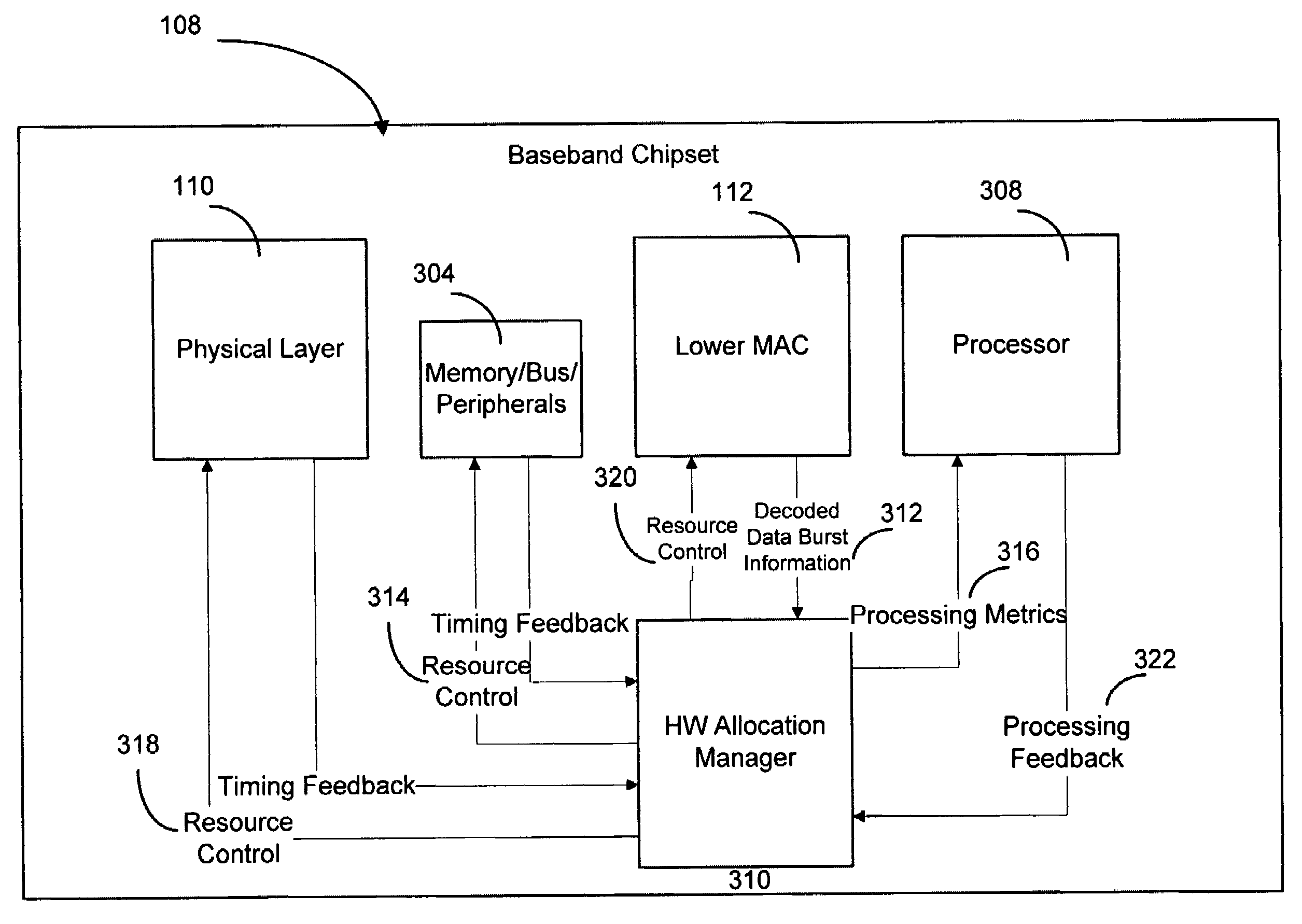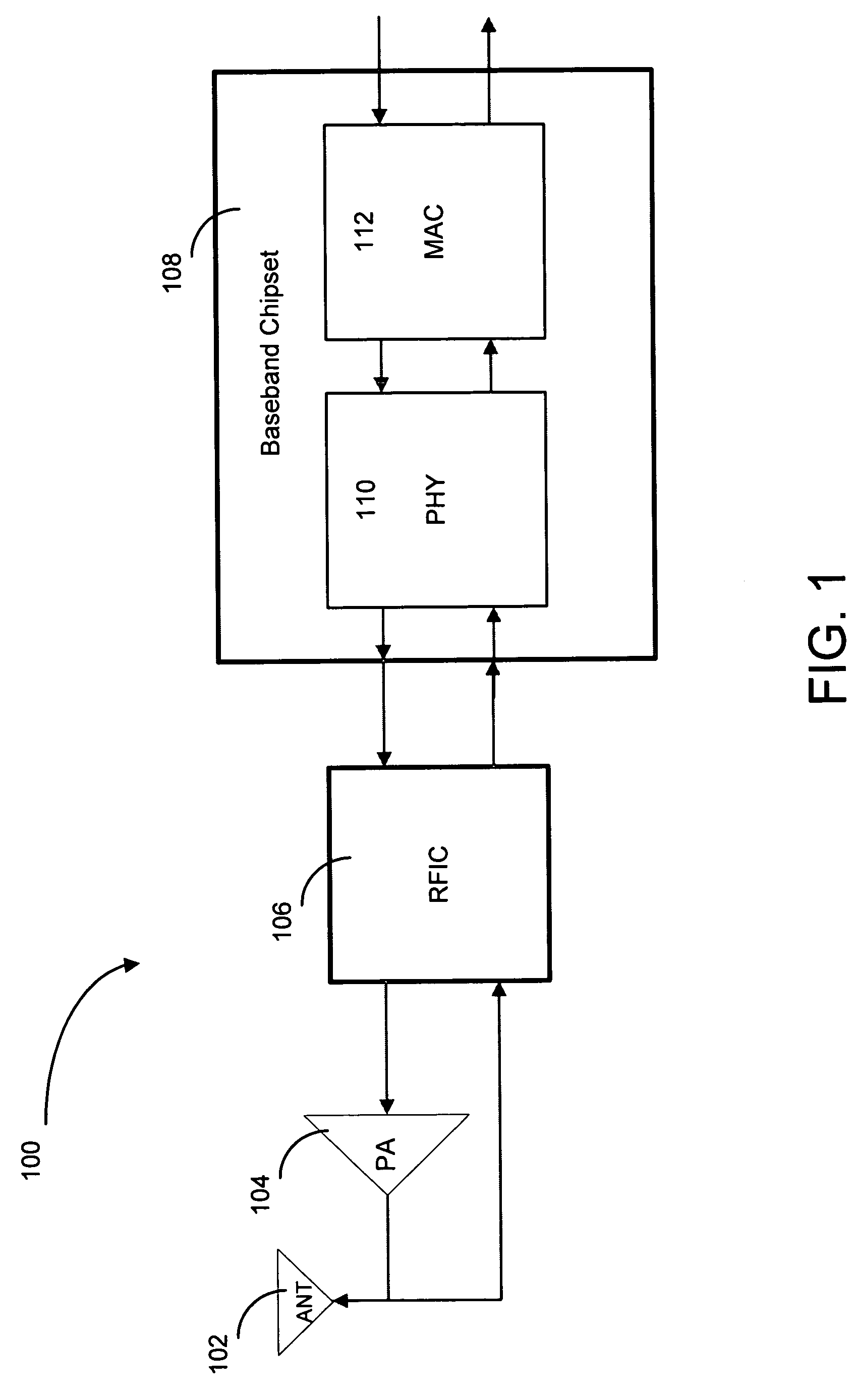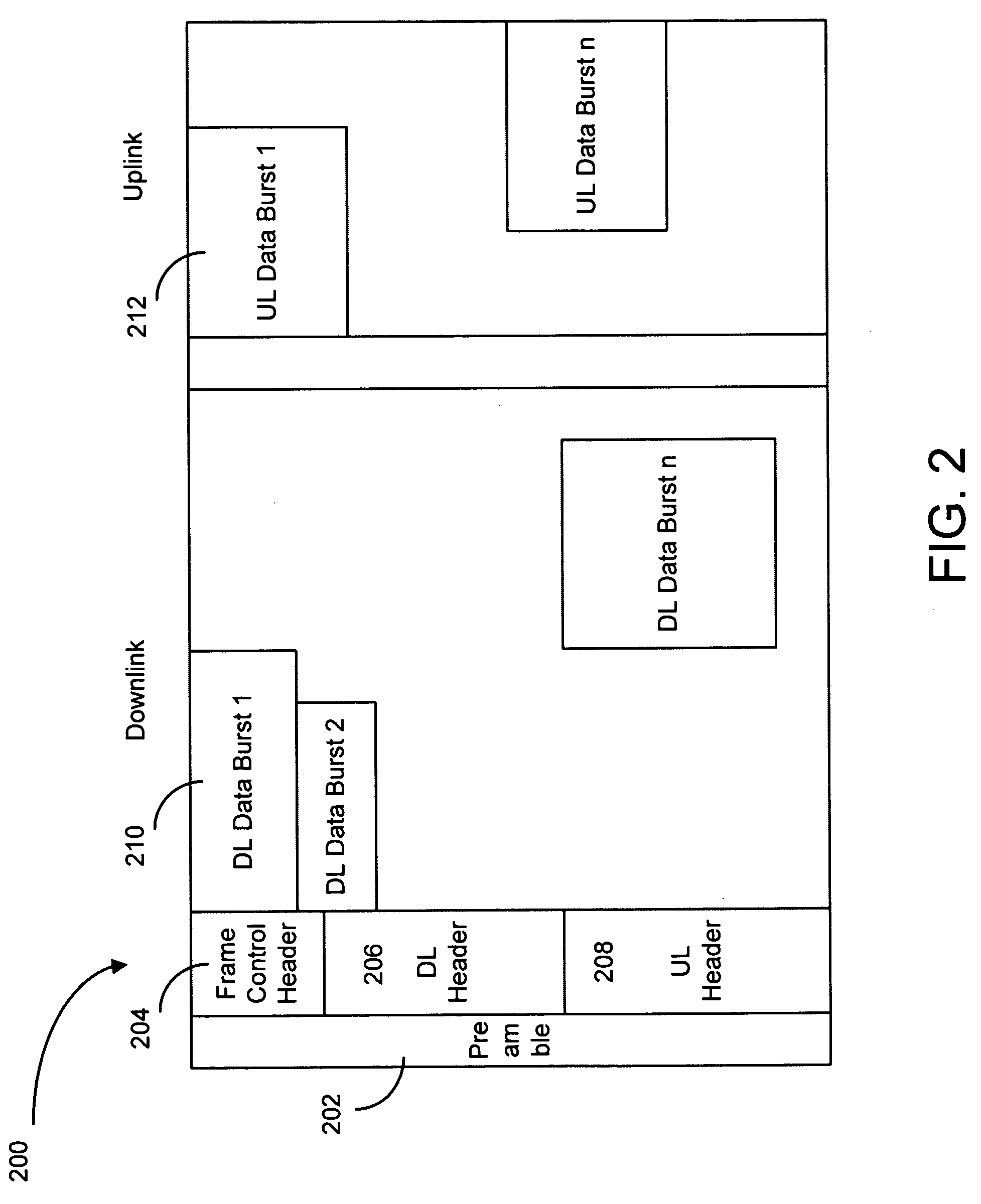Adaptive resource allocation for orthogonal frequency division multiple access
a technology of orthogonal frequency division and resource allocation, applied in the direction of wireless commuication services, transmission path sub-channel allocation, criteria allocation, etc., can solve the problems of high power consumption and inefficient hardware resource utilization
- Summary
- Abstract
- Description
- Claims
- Application Information
AI Technical Summary
Benefits of technology
Problems solved by technology
Method used
Image
Examples
Embodiment Construction
Of PREFERRED EMBODIMENTS
[0017]FIG. 1 shows a general block diagram of wireless communications systems 100. As demonstrated in FIG. 1, the wireless communications system comprises an antenna 102, a power amplifier (PA) 104, a radio frequency integrated circuits (RFIC) chip 106, and a baseband chip 108 comprised of the PHY 110 and MAC 112.
[0018]FIG. 2 represents a general structure of the OFDMA frame 200. The frame starts with a preamble 202 and three different headers 204, 206, and 208 for the frame, and downlink (DL) data bursts 210 and uplink (UL) data bursts 212. The preamble 202 is used for frame synchronization and contains the cell identification. The frame control header (FCH) 204 includes general information on the entire frame. The headers 204, 206, and 208 describe various properties of data bursts within the frame and provide information to extract the data bits. There is a separate DL header 206 and UL header 208. Both the DL header 206 and the UL header 208 describe all ...
PUM
 Login to View More
Login to View More Abstract
Description
Claims
Application Information
 Login to View More
Login to View More - R&D
- Intellectual Property
- Life Sciences
- Materials
- Tech Scout
- Unparalleled Data Quality
- Higher Quality Content
- 60% Fewer Hallucinations
Browse by: Latest US Patents, China's latest patents, Technical Efficacy Thesaurus, Application Domain, Technology Topic, Popular Technical Reports.
© 2025 PatSnap. All rights reserved.Legal|Privacy policy|Modern Slavery Act Transparency Statement|Sitemap|About US| Contact US: help@patsnap.com



